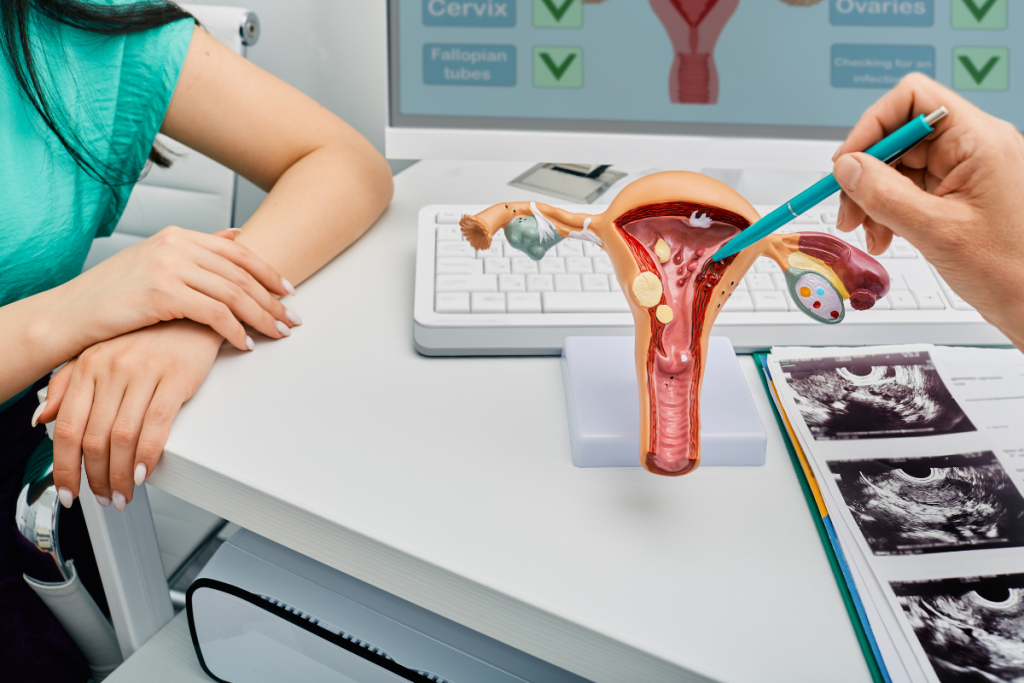Opciones quirúrgicas para el prolapso de órganos pélvicos: Exploración de las últimas técnicas y resultados

Pelvic organ prolapse (POP) is a prevalent condition affecting many women worldwide, particularly those who have undergone childbirth or are experiencing hormonal changes associated with aging. It occurs when the pelvic floor muscles and tissues weaken, causing pelvic organs such as the bladder, uterus, or rectum to descend into the vaginal cavity. This descent can […]
Los últimos avances en la detección de pólipos: Guía para obstetras

Polyps, benign growths on the lining of the uterus, cervix, or vagina, are a common concern in obstetrics and gynecology. They can cause irregular menstrual bleeding, infertility, and other health issues. Early detection and effective management are crucial for patient outcomes. This guide explores the latest advances in polyp detection, providing obstetricians with the knowledge […]
La relación entre los miomas y la infertilidad - Parte 2: Lo que todo obstetra debe saber

In the second part of our blog series on the link between fibroids and infertility, we delve deeper into the management strategies for infertile women with fibroids. From conservative measures to surgical interventions and assisted reproductive techniques, a multifaceted approach is necessary to address the complex relationship between fibroids and fertility. Obstetricians play a crucial […]
The Link Between Fibroids and Infertility Part 1: What Every Obstetrician Should Know

Fibroids, also known as uterine leiomyomas, are benign growths that develop in the muscular wall of the uterus. These growths vary in size and can have a significant impact on a woman’s fertility. Understanding the relationship between fibroids and infertility is essential for obstetricians and gynecologists to provide optimal care to women seeking to conceive. […]
Collaborative Approaches to Uterine Polyp Management: Insights for Obstetricians and Gynecologists

When it comes to managing uterine polyps, knowing the options is half the battle. These small yet pesky growths in the womb lining can range from being harmless sesame seed-sized nuisances to more concerning golf ball-sized formations that demand attention. With a staggering average ROI of 3800% on successful treatments according to some reports – […]
Diagnóstico del prolapso de órganos pélvicos: Herramientas y técnicas clave de evaluación para obstetras

Explore key assessment tools and techniques for diagnosing pelvic organ prolapse (POP) in women. Learn about types, symptoms, and treatment options, including the use of advanced diagnostic technologies. Enhance your understanding and management of POP for improved quality of life.
Patient Education and Empowerment: Supporting Women with Pelvic Organ Prolapse in Clinical Practice

Imagine navigating a path where every step matters, that’s the journey women with pelvic organ prolapse embark on. By delving into this read, you’ll gain insight into the nitty-gritty of what causes your body to change in such an unexpected way. Patient education and empowerment: these aren’t just buzzwords but critical elements for those facing […]
Patient Education and Empowerment: Key Strategies for Managing Stress Urinary Incontinence in Clinical Practice

When it comes to stress urinary incontinence, there are plenty of opportunities for women to learn more about their condition, and how to manage and treat it. Let’s examine the key strategies to educate patients about stress urinary incontinence. 1. Seek Diagnosis Unfortunately, many women do not see a doctor when they have incontinence. In […]
Beyond Medications: Exploring Alternative Therapies for Stress Urinary Incontinence

Many women live with stress urinary incontinence—leaking urine when they cough or laugh. Since many medications have negative side effects, women seek other treatment options, which are effective at treating SUI.
The Role of Pelvic Floor Exercises in Managing Stress Urinary Incontinence

Women around the world share the experience of urine leakage when they laugh, cough or do physical activity. This condition is known as stress urinary incontinence and is not limited to women. However, incontinence or loss of bladder controls affects twice as many women as men. This could be due to the fact women go […]
